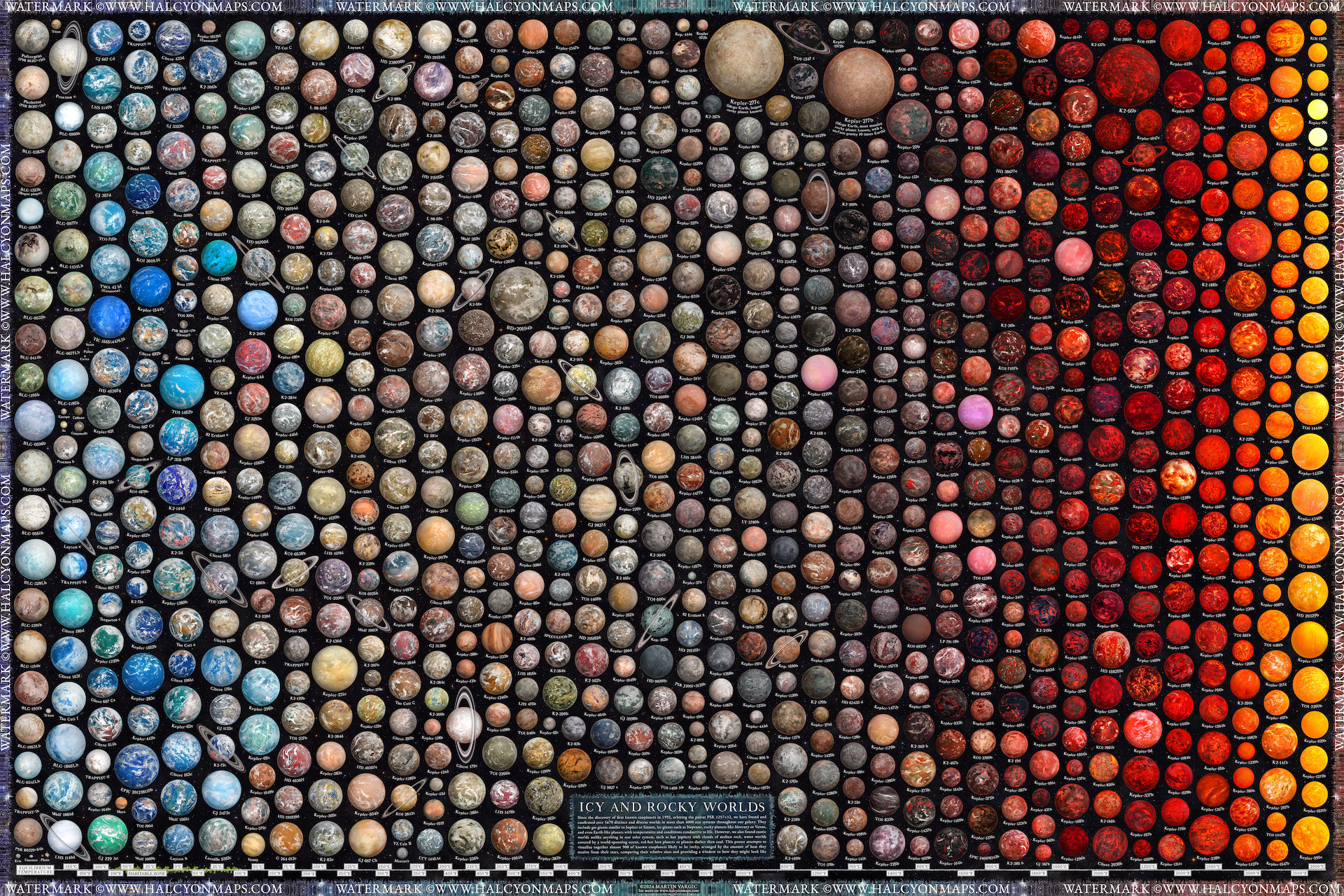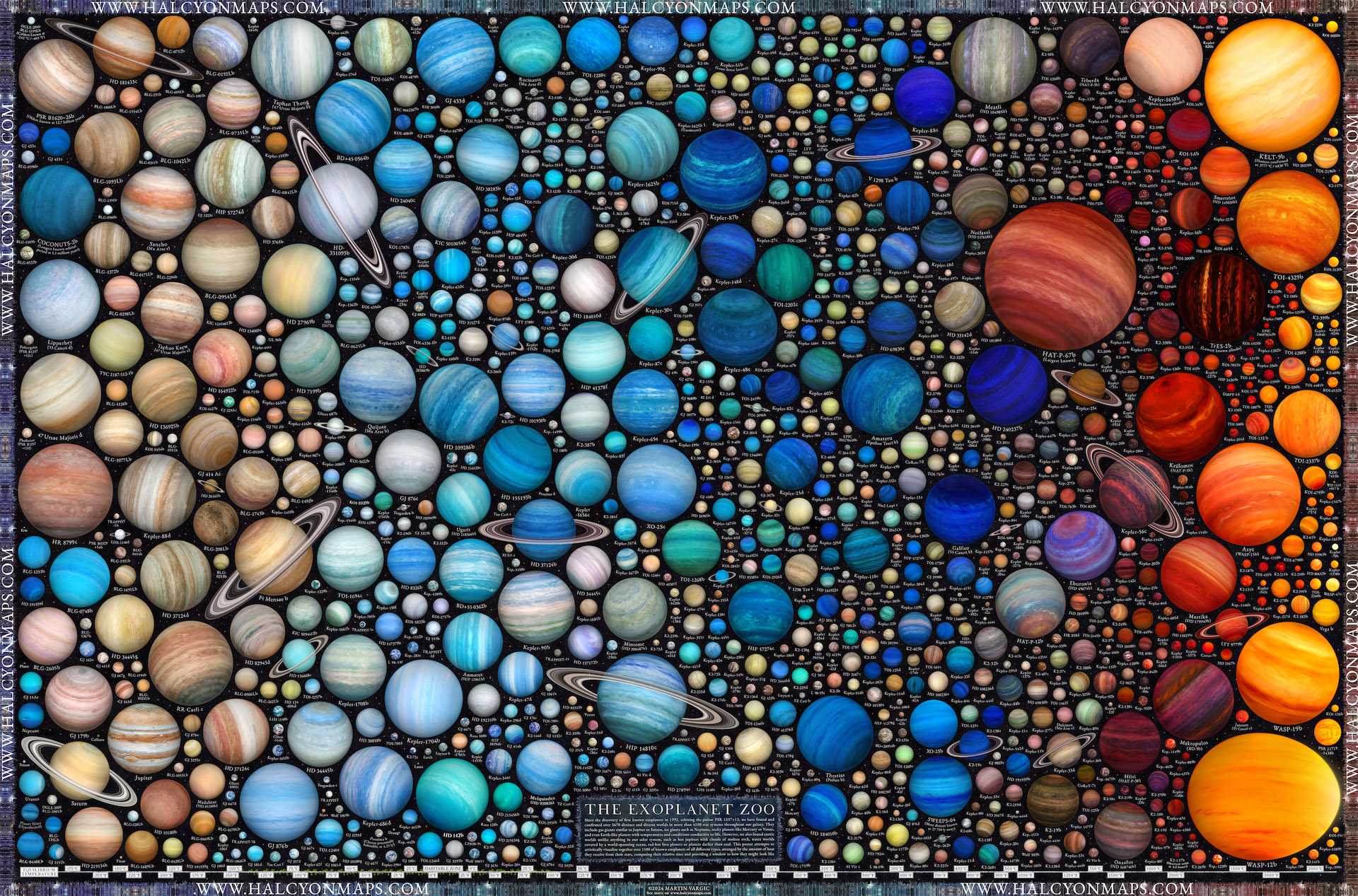What it is: Two infographics that show 1,600 exoplanets of all types and sizes according to up-to-date astronomical observation data
Where it is: All across the Milky Way. (But the Icy and Rocky Worlds and Exoplanet Zoo infographics are available online.)
When it was shared: June 2024
Why it’s so special: A graphic artist has used the latest astronomical observation data to create two large infographics that artistically visualize and compare more than 1,600 exoplanets of all types and sizes.
An exoplanet is any planet that orbits a star other than our sun. Well over 5,000 exoplanets have been discovered in our Milky Way galaxy, according to NASA.
Martin Vargic, a Slovakian artist and the author of Vargic’s Curious Cosmic Compendium, published these exquisite images on his website, Halcyon Maps, where they are also available as posters.
The first infographic, “Icy and Rocky Worlds,” contains more than 900 individually illustrated Earth and “super-Earth” sized planets arranged according to their equilibrium temperature.

“It includes the majority of known Earth-size and super-Earth planets below six Earth masses, especially those likely to be terrestrial,” Vargic told Live Science. The second infographic, “The Exoplanet Zoo,” focuses on larger gas and ice giants.
Related: James Webb telescope detects 1-of-a-kind atmosphere around ‘Hell Planet’ in distant star system
“Finishing both infographics took about six to seven months,” Vargic said. “I worked on both simultaneously while creating planetary textures and rendering the planets one by one.” While he illustrated the exoplanets for the two infographics, Vargic also found time to create dozens of individual artist impressions of specific star systems containing notable exoplanets.
Vargic wanted to reflect the sheer variety of exoplanets in the infographics. “I tried to include a good, representative number of exoplanets from all equilibrium temperature classes, from cryogenic to yellow-hot, for maximum variety, as well as most of the record-holding exoplanets,” he said. The illustrations, therefore, include the largest, hottest and most distant exoplanets known.

“I have several favorite planets,” Vargic said. “One is Kepler 277b, an ultra-dense rocky planet more massive than Saturn with a surface gravity of over 10 Gs.” Another of Vargic’s favorites is WASP-12 b, a giant puffy hot Jupiter tidally stretched into an egg-shape, which is being consumed by its star.
His pantheon of exoplanets includes extreme worlds unlike anything in the solar system, from lava planets in the process of being vaporized by their star to others where salts, silicates, metals and even diamonds evaporate and condense to form exotic clouds, rain and hail. However, Vargic is excited by exoplanets because of “the possibility of finding habitable exoplanets that could shed much light on the origin and nature of life or nurture intelligent civilizations unlike anything we can imagine.”
A future project will be to make a super-sized infographic showing every known exoplanet, he added.





